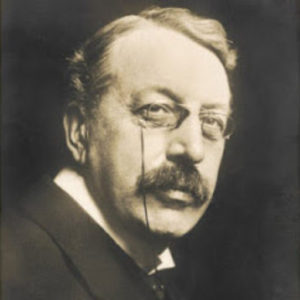More on Stanford’s Missing Works
In November I wrote about the three missing Masses that Stanford apparently wrote for Richard Terry and the Choir of Westminster Cathedral.
We are fortunate that we can account for almost all of the music that Stanford composed. Much of it was published and where this was not the case autographed manuscripts or copyists’ scores of the music have generally survived. A large portion of the autographed scores are in the Library of the Royal College of Music, the British Library or the Hudson Archive at the Newcastle University Library. However, many of the autographed scores of published works are still unaccounted for and are presumed to be in libraries, private hands or are lost.
 There are, however, a handful of works that we know Stanford composed which were not published and where no autograph score has surfaced since his death. There were several very early songs and a Piano Trio in G major composed in 1875, which are missing. The first of the missing works without an opus number is the Piano Sonata in D flat, Op. 20. This appears to have been written in late 1883 and composed for a collection of ten original piano sonatas advertised by Henry Carte, of the music publisher Rudell, Carte & Co. Although this project was not completed, Stanford’s Sonata was written. It appears to have been a substantial three movement work which was performed twice in London in February 1884 and subsequently received a performance in Cambridge in 1885. It received positive reviews from the critics. Since these performances the work has not been heard of.
There are, however, a handful of works that we know Stanford composed which were not published and where no autograph score has surfaced since his death. There were several very early songs and a Piano Trio in G major composed in 1875, which are missing. The first of the missing works without an opus number is the Piano Sonata in D flat, Op. 20. This appears to have been written in late 1883 and composed for a collection of ten original piano sonatas advertised by Henry Carte, of the music publisher Rudell, Carte & Co. Although this project was not completed, Stanford’s Sonata was written. It appears to have been a substantial three movement work which was performed twice in London in February 1884 and subsequently received a performance in Cambridge in 1885. It received positive reviews from the critics. Since these performances the work has not been heard of.
A Festival Overture in B flat was composed by Stanford around 1877 and given at the Three Choirs Festival in September of 1877 conducted by Stanford and subsequently at the Crystal Palace, London in November 1877 conducted by August Manns. This work was not published and the autograph score is missing.
Stanford’s Op. 33 Festival Overture in C major, “Queen of the seas”, was given in Berlin on January 14th, 1889 conducted by Stanford himself. It received good reviews and Parry thought that it was a strong work. But the music was not published and the autograph manuscript has disappeared.
Stanford was well known as a brilliant orchestrator and it is, therefore, not surprising that he composed orchestral versions of several of his solo songs and song cycles. Sadly, several of the orchestral arrangements of his songs appear to be missing. He took three orchestral arrangements of songs with him to Berlin in 1889 and conducted them in a concert. These included an orchestral arrangement of one of his best known songs, La Belle Dame sans Merci. These were not published and the autograph scores have disappeared. In addition, he orchestrated his Op. 72, Die Wallfahrt nach Kevlaar, a setting of Heine. This version appears to have received one performance in 1902, but the orchestral score has not survived.
Stanford wrote nine completed operas. The seventh, Christopher Patch, Op.61, was never performed but the music exists in both a full score and a vocal score. What does not appear to have survived is a copy of the dialogue.
John Porte in his 1921 book on Stanford’s music discusses two works which also do not appear to have survived. These are the Six Part Songs, op.33, of which Porte says “ these are fairly tuneful and interesting, and are well written.” and the Ten Partsongs, op 156 of which Porte says “not published at present”.
As can be seen, the music for a number of interesting compositions by Stanford is missing. Hopefully some of these works will eventually turn up in archives, libraries or private collections.

